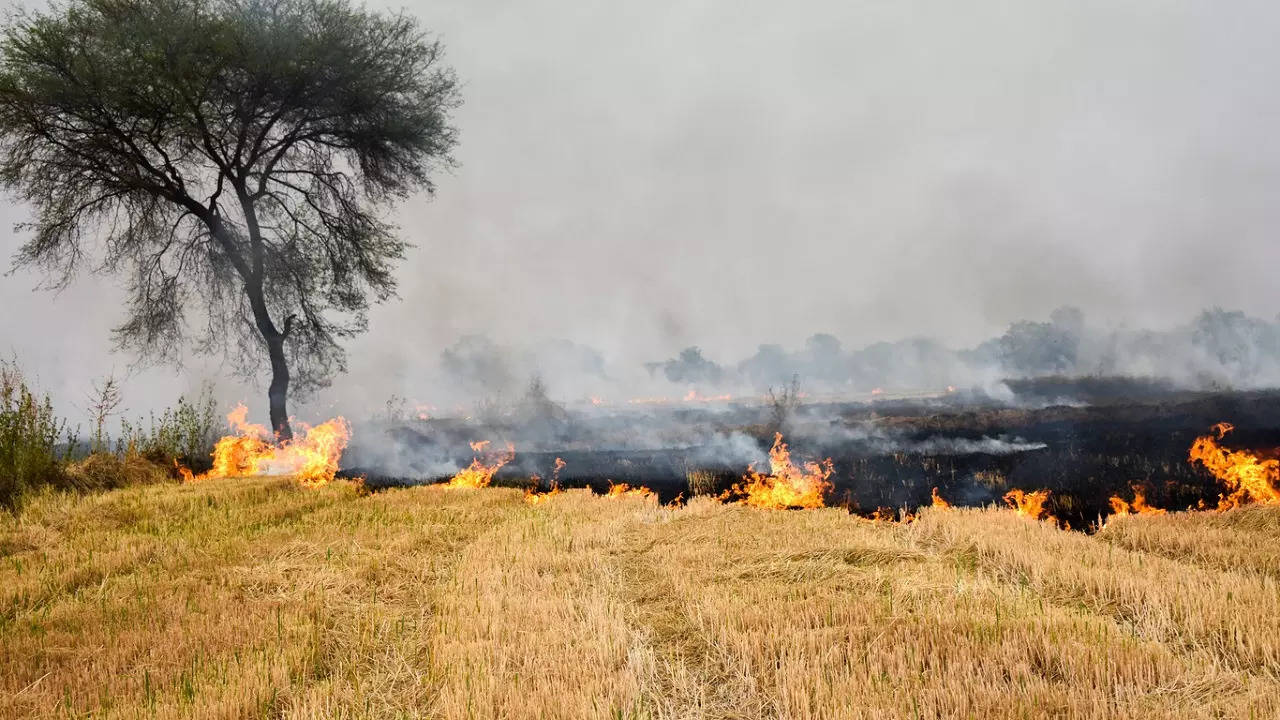Punjab: 21 incidents of stubble burning recorded across 11 districts by PRSC; six cases recorded from Hoshiarpur district
Most wheat farmers plant paddy after harvesting their wheat, but they do not plant a third crop between wheat and paddy. This allows them plenty of time to deal with the wheat stubble. Farmers have 45 to 60 days between wheat harvesting and paddy sowing when their fields are unoccupied, yet they still burn stubble instead of adopting stubble management equipment.

Representational image
Photo : iStock
Chandigarh: With the start of wheat harvesting, cases of wheat stubble burning have returned to Punjab. The Punjab Remote Sensing Centre (PRSC), Ludhiana, had registered 21 cases of stubble burning across 11 districts as of Monday (April 11). There were 15 and 13 field fire incidents from April 1 to April 11 in 2021 and 2020, respectively.
Most wheat farmers plant paddy after harvesting their wheat, but they do not plant a third crop between wheat and paddy. This allows them plenty of time to deal with the wheat stubble. Farmers have 45 to 60 days between wheat harvesting and paddy sowing when their fields are unoccupied, yet they still burn stubble instead of adopting stubble management equipment.
According to PRSC data, a maximum of six incidents of stubble burning were registered in the Hoshiarpur district, with two incidents each in Bathinda, Faridkot, Jalandhar, Nawanshahr, and Patiala districts, and one each in Amritsar, Ferozepur, Gurdaspur, Pathankot, and Rupnagar. So far, no field fires have been recorded in the remaining 12 districts.
According to Pollution Control Board sources, the burning began on April 1, when paddy harvesting began this year, and six incidents of burning were recorded on that day alone, The Indian Express reported.
Wheat harvesting in the state begins in earnest only after April 10.
Most wheat stubble in Punjab is used to make dry fodder for cattle, but even after producing fodder, some farmers burn the residual roots, despite the fact that roots may be readily incorporated with the soil after soaking the field moderately and ploughing it, according to experts.
Punjab grows wheat on about 35 lakh hectares, and after harvesting, approximately half of the land under wheat is set ablaze. Farmers, on the other hand, are seeking per-acre pay to manage the stubble.
Trending:
End of Article
Subscribe to our daily Newsletter!





Related News





Interview with Dr. Debraj Shome on Shifting Perceptions in Cosmetic Surgery: Prioritizing Safety and Innovation

1937 Mercedes-Benz 540K: The Resurfacing of a Star from The Pranlal Bhogilal Collection!

Brothers Hacked In Front Of Eyes, Boy, 10, Shares Chilling Details Of UP Double Murder

Delhi Police Recovers Body Of ACP'S Missing Son From Haryana's canal

15-Year-Old Rape Survivor Hangs Herself After She Was Found Pregnant









